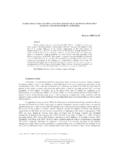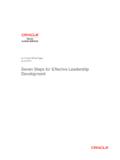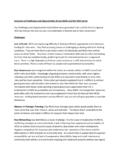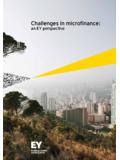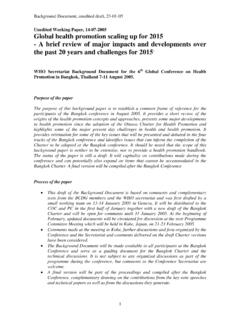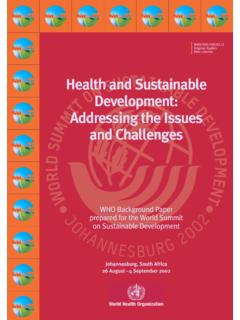Transcription of “Effective Human Resource Management Strategy”
1 effective Human Resource Management Strategies by Robert J. Greene, PhD & Peter Ronza Pontifex Consulting Group In order for Human Resource Management to be done effectively there must be a strategy that defines an organization s approach to attracting, retaining and motivating a workforce that will enable it to succeed. The critical characteristics of an effective HR strategy are: 1) it fits the organizational context, 2) it aligns Human Resource Management policies and programs with the strategy of the organization, and 3) it integrates the HR functional strategies (staffing, development, performance Management , rewards Management and employee relations) with each other. Figure 1, Aligning Human Resources Strategy With Organizational Context, provides a model for formulating an HR strategy that fits the organization at a particular point in time. This model can guide the formulation of a Human Resource Management strategy where one has not existed or has not been formally defined and can also be used to evaluate the current effectiveness and appropriateness of an existing strategy.
2 Once an effective strategy has been defined it can then be used to evaluate how well policies and programs fit the strategy. The model is dynamic; if any of the contextual components change the HR strategy must be re-assessed. The degree to which the HR strategy is made specific will also depend on contextual characteristics; in times of uncertainty it may be in the form of a general direction, to be sharpened in focus when a direction is clear and objectives defined. How an effective HR strategy can be formulated is discussed below: Fit With The Organizational Context The vision and mission of an organization define the organization s desired future; both the end state and the role the organization will play in producing that end state. The example below from the utility division of a major city illustrates how the vision and mission might be defined: Vision: (OurCity) with reliable power and safe/clean water available to the entire population, contributing to a healthy/high quality standard of living.
3 Mission: To generate and distribute power and to purify and distribute water to the entire population reliably and in a cost efficient manner. Although vision and mission statements are often dismissed as useless products of Management retreats or a palliative for investors and the community it is difficult to set a direction without knowing the desired destination. Admittedly these statements accomplish little if they are relegated to posters on bulletin boards if they are reflected in the behavior of leaders they can truly become a part of the mindset of the workforce. Figure 1 Aligning Human Resources Strategy with Organizational Context VisionMissionCultureHistoryCore ideologyCurrent normsOrganizational StrategyObjectivesCore competenciesStrategy for competitive advantageCritical success factorsPerformance criteria/standardsOrganizational StructureStructural designFunction/unit relationshipsCoordinating nonemployeesWorkplace designEmployee role definitionEnvironmentalRealitiesCompetit ionEconomicsSocial/political climateNatural resourcesLabor/skills supplyInfrastructureProduct marketcharacteristicsInterorganizational relationshipsOrganizationalRealitiesSize /complexity/maturityIndustry/businessPro duct competitivenessGeography/market coverageHuman capital requirementsStakeholder expectationsLearning capacityResources available: Financial capital Technology Intellectual capital InfrastructureHuman Capital RequirementsHuman Resources StrategyOrganization/HR developmentRewardsSelectionPerformanceMa nagementStaffingSource.
4 Adapted from Culturally Compatible Rewards Strategies by R. J. Greene, ACA Journal, Autumn 1995 (revised December 1998). The culture of an orgnaization defines how its members see the world; their beliefs, values and priorities. Edgar Schein defined culture as how an organization resolves problems of external adaptation and internal integration. Much has been written about organizational culture but its role in defining how members of an organization behave can hardly be overemphasized. The culture(s) of the workforce is also critical to how an organization will function. Diversity in national/ethnic, generational and occupational culture offers an opportunity to look at challenges from many perspectives but also presents challenges when diverse viewpoints must be reconciled. Globalization has presented virtually every organization with the task of attracting, retaining and motivating people with very different perspectives and the culture of the organization must address the challenges associated with it.
5 Organizational culture can be defined in many ways but the formal articulation of the desired culture can help to align all constituencies. Below is an example of how key elements of the aforementioned utility s culture could be defined: Culture: Reliability in serving customers and executing processes is the primary goal of all employees and organizational units. All employees will be expected to perform well as individuals while making others they work with and their unit effective . Safe, reliable and affordable products are the primary measures of effectiveness. Rewards and career progression will be based on competence and performance. Long service will be rewarded through recognition programs and company loyalty to the employee, assuming they continue to perform and to maintain their skills and knowledge as required. Ingenuity and creativity are valued as long as the parameters defined by safety, reliability and cost effectiveness requirements are observed.
6 Although this summary seems to leave a lot unsaid about how an employee should behave when presented with a particular set of circumstances it establishes the importance of safety and reliability and commits to valuing both service and performance and commits the organization to adhering to established principles. The environmental realities faced by an organization at a given point in time will significantly impact its strategy. The economic, market, social/political, legal and competitive conditions will play a major part in determining the feasible approaches to accomplishing organizational objectives. Organizations attempting to use contingent incentive compensation awards to motivate employees world wide may find that in some places the approach is not accepted or even illegal. The condition of the infrastructure needed to support operations may render an otherwise attractive strategy impossible to execute. Failure to perform regular environmental scans and to consider their impact on the organizational and Human resources strategies is the recipe for disaster, particularly if operations are dispersed globally.
7 The environmental realities must be identified and their impact assessed. An example of a summary of environmental realities for the aforementioned utility might be: Environmental Realities: Governmental support is available to provide long-term capital for constructing the necessary power generation/distribution and water purification/ processing/ distribution infrastructure. Private capital is available at premium rates. Major corporations have own facilities to provide their power. Utilities from other areas free to provide alternative power sources due to deregulation. Regulatory control precludes denying power or water based on consumer ability to pay and customer dissatisfaction shall subject the organization to scrutiny by regulatory bodies. Environmental impact of operations will be monitored by public and private agencies. Although much is left unstated in such a summary it is important to identify the forces faced by the organization and to assess their impact on both strategy and on how operations are conducted.
8 The organizational realities faced by an organization at a given point in time will also have a critical impact on what the strategy will be and how it will be executed. The characteristics of the organization and its business(es) will be dynamic, as will the resources it has available. As organizations grow it becomes increasingly critical to formualte policies and systems that will enable the growth to be controlled. The Human capital requirements are particularly relevant to the Human Resource Management it does little good to build a state of the art microchip plant if the available workforce does not have the knowledge, skills and abilities to operate it effectively. Using the aforementioned utility as an example again, a summary of internal realities might be as follows: Organizational Realities: Adequate technological knowledge exists within the workforce to operate and maintain facilities/system. Engineering consulting resources are available for design work exceeding the existing skills and staffing levels, partially funded by governmental agencies.
9 Operating capital meets minimally acceptable levels. Current workforce is resistant to major infusion of technology if it results in reduction of jobs. Over one-half of the workforce is in need of continuing training in new technology. Entitlement to continued employment and annual adjustments to pay levels is strong. Alignment With Organizational Strategy Once the vision and mission of the organization have been estabished, the culture defined and the environmental and organizational relaities identified, the next step is to formulate a strategy that will enable the organization to achieve its objectives. In order to test the feasibility of a strategy the core competencies (capabilities) required for successful execution of the strategy must be defined and the existing capabilities assessed. Many strategies are not implemented because organizations are not be capable of doing what is needed, so it is critical to realistically assess the feasibility of adopting a strategy.
10 Once core capabilities have been identified and their existence confirmed the next step is to decide how they will be deployed to produce a competitive advantage. Finally, it is necessary to identify the critical success factors and then to create performance criteria and standards so performance can be continuously measured. One of the critical prerequisites for producing motivation and alignment in the workforce is a clear definition of what is needed and how each person/unit should act to facilitate attainment of the organization s objectives. Using our utility example once again, a summary of the strategy might read as follows: Strategy: To be the preferred provider of power and water for commercial organizations by providing more peak capacity than they can afford and by demonstrating superior reliability. Lower rates will be charged consumers and will be funded by the ability to charge higher commercial rates and by government subsidy for low-income customers.
